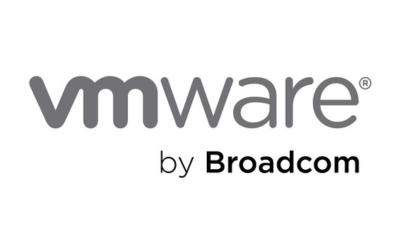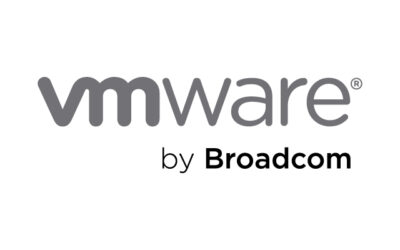What goes on behind the cloud? Cloud systems are only possible thanks to the layers that the cloud is built upon, from hardware to hypervisors to virtual machines (VM). If you’re thinking about creating your own private cloud, you’ll need to understand these different technical solutions, and how they fit together to deliver the cloud you need.
What is a hypervisor?
Essentially, a hypervisor is software that enables virtualisation. It can be installed directly onto hardware (a type 1 or bare-metal hypervisor), or on top of an existing operating system such as Microsoft Windows or macOS (a type 2 hypervisor). The hypervisor is what makes the magic of virtual machines happen. No hypervisor, no cloud.
What is virtualisation?
Virtualisation is the concept of taking what would once have been a physical workspace on an individual server and converting it into a simulated one. Everything you do on a private cloud-based system is virtualised. It exists on a virtual machine, created by the hypervisor and hosted by one hardware system.
The hypervisor not only creates these virtual machines, it also manages them, acting as a go-between for your VM and the hardware host. Every instruction or request you make when you’re using the virtual machine is relayed to the host by the hypervisor. The hypervisor is also responsible for allocating the physical resources of the host system – e.g. CPUs, GPUs, memory, storage, etc. – according to a given schedule.
In a sense, it’s like the manager of your virtual machine AirBnB. It has turned a chateau into a suite of serviced apartments and now spends its days making sure everyone has what they need to enjoy their stay.
So, when I access the cloud I am accessing a virtual machine?
Exactly. One of the things that cloud architecture does really well is, if it’s setup correctly, it optimises the use of hardware. Cloud providers invest in hosting capacity and then they use hypervisors to make the most of this capacity by creating and managing these virtual machines.
Hypervisors don’t just divvy up operating capacity between different users. They also enable each of those virtual machines to run entirely different operating systems.
Normally, one server runs one operating system. This is why, traditionally, you might have kept separate servers for separate operations, e.g. one for your emails, one for your website. This is a straightforward way of managing your operations, but it can leave you with a lot of unused hardware capacity. Unused capacity costs money. A hypervisor lets you take just one hardware system and split it in the same way you were doing over multiple servers, so you can use 100% of the capacity and get more value out of your investment.
How do I know which type of hypervisor I need?
First off, you need to define whether you need a Type 1 or Type 2 hypervisor.
Most enterprises will be looking for a Type 1 hypervisor, where the hypervisor lays directly on the hardware host and effectively acts as an operating system of its own. This is a fast and secure option, ideal for organisations managing data-dense workflows, or handling highly sensitive data.
A Type 2 hypervisor is more commonly found on laptops or individual PCs, where the user needs to switch between operating systems because of the nature of their work. It’s not as quick, or as secure, but it can be useful in specific circumstances.
Now, in terms of vendors, there are a couple of big names. Notably, VMWare offers both Type 1 and Type 2 programs. Hyper-V is Microsoft’s hypervisor offering – described as a Type 1, although it runs a little differently to your standard Type 1 hypervisors. You can also opt for one of the open source hypervisors, such as KVM or Red Hat.
It can be overwhelming if you are not too sure what sets one apart from the other. In general, you should first identify your own priorities – is it speed, security, support, cost, or something else? – and then assess the vendors against these benchmarks. IBM has a helpful list of hypervisor characteristics worth checking out before you make any big decisions. And, of course, you can always give us a call – we’re more than happy to talk through your needs.
What’s the catch?
There’s no catch, as such, but there are common problems with all virtualised environments – mostly relating to the optimised use of that hardware host, although security can also be an issue. For instance, VM sprawl – the phenomenon that occurs when the number of virtual machines grows beyond your capacity to manage them – can result in a loss in performance and reduced security. Virtual machines that should have been retired end up clogging up the system and presenting an ideal opportunity for a hacker to gain access. This isn’t so much a hypervisor problem as a behavioural problem that is enabled by the hypervisor, but still it is worth noting.
The cost of different hypervisors also varies quite widely. In general, you’re looking at a fairly high initial outlay and then a lower ongoing licensing cost – this applies whether you’re stopping at virtualisation or looking at private cloud. Be careful not to fixate on that initial cost and look instead at the total cost of ownership – while also considering what value that monthly investment will bring to your business.
Matching demand and functionality
Ultimately, your choice of hypervisor is the foundation for your virtualised environment, so the most important thing is that it enables you to achieve what you want to achieve. Picking the right hypervisor comes down to accurately assessing your needs and matching those with the functionalities of the hypervisor systems available to you. If you need help making that decision, talk to our specialists. We have experience with a range of hypervisors and can talk you through your options.



